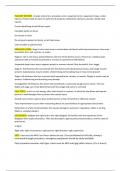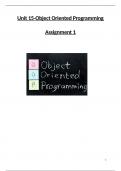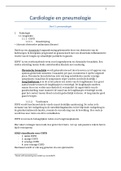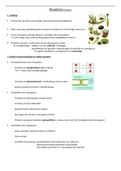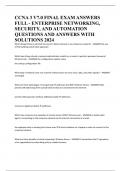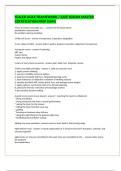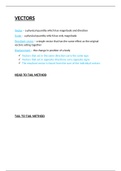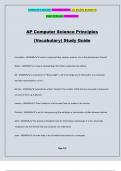INCIDENT REPORTS- incudes med errors, procedure error, equipment error, equipment injury, visitor
injuries, threats made to client or staff, lost of property> wheelchair, dentures, jewelry, needle stick
injuries
Person identifying should fill out report
Complete within 24 hours
Do not put in chart
Do not give to patient or family, or let them know
Chart incident in patient chart
PRESSURE ULCERS- Stage 1>skin intact area is red and does not blanch with external pressure. Area may
be painful, firm, soft, warmer, or cooler
Stage 2> skin is not intact, partial thickness skin loss of the dermis occurs. Present as a shallow open
ulceration with a red-pink wound bed or as intact or open/serum filled blister
Suspected deep tissue injury> appears purple or maroon colored. May be painful, firm, boggy
Stage 3> full thickness skin loss extends into the dermis and subcutaneous tissues, and slough may be
present. Subcutaneous may be visible. Undermining and tunneling may or may not be present
Stage> full thickness skin loss is present with exposed bone, tendon, or muscle. Slough or eschar may be
present. Undermining and tunneling may develop
Unstageable> full thickness loss where the wound bed is covered by slough and or eschar. The true
depth and stage can not be determined until the slough and eschar is removed
CIVIL TORTS- a tort is a civil wrong, other than breach in contract, in which the law allows and injured
person to seek damages from a person who caused injury
Assault occurs when a person puts another person in fear of harmful or offensive contact
False imprisonment occurs when restraining device are used without an appropriate clinical need
Defamation is a false communication that causes damage to someone’s reputation, either in writing
(libel) or verbally (slander)
DELEGATION- delegate the right task to the right delegate. Be familiar with the experience of the
delegate, their scopes of practice. Their job description, agency policy and procedures, and the state of
practice act
5 rights
Right task, right circumstance, right person, right direction, right supervision
ERCP- client must be NPO 6 to 8 hours before the test. Client positioned on left side, airway is
monitored through procedure, emergency equipment should be easily available.
Post procedure>monitor vital signs, client must be NPO until gag reflex returns (1 to 2 hours)
, Monitor signs for perforation (pain, bleeding, unusual difficulty swallowing, elevated temp)
TRIAGE- (RED) priority 1 (highest)- life threatening injuries and need immediate attention and
continuous evaluation but have a high probability for survival when stabilized
Clients who are trauma victims, chest pain, severe resp distress or cardiac arrest, limb
amputation, acute neurological deficits, sustained chemical splashes to the eyes
Urgent (yellow) priority 2- require treatment and whose complications are not life threatening,
provided that they are treated in 30 minutes to 2 hours. These clients require 30 to 60 minutes
thereafter.
Clients with open fractures with a distal pulse and large wounds
Nonurgent (green) priority 3- client with local injuries who do not have immediate
complications and who can wait at least 2 hours for medical treatment, these clients require
evaluation every 1 to 2 hours thereafter.
Clients include closed fractures, minor lacerations, sprains, strains, or contusion
Black- if victim is dead or soon will be deceased because of severe injuries, these are victims
that will not benefit from any care
POST STREPTOCOCCAL GLOMERULONEPHRITIS-
Causes> immunological disease, autoimmune disease, a b hemolytic streptococcal infection of
the pharynx or skin, hx of pharyngitis or tonsillitis 2 to 3 weeks before symptoms
Complications>kidney failure, hypertensive encephalopathy, pulmonary edema, heart failure,
seizures
Assessment findings> periorbital and facial edema that is more prominent in the morning,
anorexia, decreased urinary output, cloudy, smoky, brown colored urine, hematuria, pallor,
irritability, lethargy, hypertension, azotemia, increased BUN increased creatinine.
Interventions> assess airway patency, vital signs, and weight. Assess for dyspnea, bounding
rapid pulse, dysrhythmias, and hypertension. Assess for distended hand and neck veins, assess
level of generalized edema, and check amount of urinary output, diet restriction sodium.
HEMOPHILIA- bleeding disorder>factor VIII deficiency and factor IX deficiency. The primary
treatment is to replace the missing clotting factor.
Assessments> abnormal bleeding in response to trauma or surgery, epistaxis, bruise easily, joint
bleeding
Interventions> monitor for bleeding, avoid contact sports, wear protective devices such as
helmets and knee and elbow pads when participating in sports
injuries, threats made to client or staff, lost of property> wheelchair, dentures, jewelry, needle stick
injuries
Person identifying should fill out report
Complete within 24 hours
Do not put in chart
Do not give to patient or family, or let them know
Chart incident in patient chart
PRESSURE ULCERS- Stage 1>skin intact area is red and does not blanch with external pressure. Area may
be painful, firm, soft, warmer, or cooler
Stage 2> skin is not intact, partial thickness skin loss of the dermis occurs. Present as a shallow open
ulceration with a red-pink wound bed or as intact or open/serum filled blister
Suspected deep tissue injury> appears purple or maroon colored. May be painful, firm, boggy
Stage 3> full thickness skin loss extends into the dermis and subcutaneous tissues, and slough may be
present. Subcutaneous may be visible. Undermining and tunneling may or may not be present
Stage> full thickness skin loss is present with exposed bone, tendon, or muscle. Slough or eschar may be
present. Undermining and tunneling may develop
Unstageable> full thickness loss where the wound bed is covered by slough and or eschar. The true
depth and stage can not be determined until the slough and eschar is removed
CIVIL TORTS- a tort is a civil wrong, other than breach in contract, in which the law allows and injured
person to seek damages from a person who caused injury
Assault occurs when a person puts another person in fear of harmful or offensive contact
False imprisonment occurs when restraining device are used without an appropriate clinical need
Defamation is a false communication that causes damage to someone’s reputation, either in writing
(libel) or verbally (slander)
DELEGATION- delegate the right task to the right delegate. Be familiar with the experience of the
delegate, their scopes of practice. Their job description, agency policy and procedures, and the state of
practice act
5 rights
Right task, right circumstance, right person, right direction, right supervision
ERCP- client must be NPO 6 to 8 hours before the test. Client positioned on left side, airway is
monitored through procedure, emergency equipment should be easily available.
Post procedure>monitor vital signs, client must be NPO until gag reflex returns (1 to 2 hours)
, Monitor signs for perforation (pain, bleeding, unusual difficulty swallowing, elevated temp)
TRIAGE- (RED) priority 1 (highest)- life threatening injuries and need immediate attention and
continuous evaluation but have a high probability for survival when stabilized
Clients who are trauma victims, chest pain, severe resp distress or cardiac arrest, limb
amputation, acute neurological deficits, sustained chemical splashes to the eyes
Urgent (yellow) priority 2- require treatment and whose complications are not life threatening,
provided that they are treated in 30 minutes to 2 hours. These clients require 30 to 60 minutes
thereafter.
Clients with open fractures with a distal pulse and large wounds
Nonurgent (green) priority 3- client with local injuries who do not have immediate
complications and who can wait at least 2 hours for medical treatment, these clients require
evaluation every 1 to 2 hours thereafter.
Clients include closed fractures, minor lacerations, sprains, strains, or contusion
Black- if victim is dead or soon will be deceased because of severe injuries, these are victims
that will not benefit from any care
POST STREPTOCOCCAL GLOMERULONEPHRITIS-
Causes> immunological disease, autoimmune disease, a b hemolytic streptococcal infection of
the pharynx or skin, hx of pharyngitis or tonsillitis 2 to 3 weeks before symptoms
Complications>kidney failure, hypertensive encephalopathy, pulmonary edema, heart failure,
seizures
Assessment findings> periorbital and facial edema that is more prominent in the morning,
anorexia, decreased urinary output, cloudy, smoky, brown colored urine, hematuria, pallor,
irritability, lethargy, hypertension, azotemia, increased BUN increased creatinine.
Interventions> assess airway patency, vital signs, and weight. Assess for dyspnea, bounding
rapid pulse, dysrhythmias, and hypertension. Assess for distended hand and neck veins, assess
level of generalized edema, and check amount of urinary output, diet restriction sodium.
HEMOPHILIA- bleeding disorder>factor VIII deficiency and factor IX deficiency. The primary
treatment is to replace the missing clotting factor.
Assessments> abnormal bleeding in response to trauma or surgery, epistaxis, bruise easily, joint
bleeding
Interventions> monitor for bleeding, avoid contact sports, wear protective devices such as
helmets and knee and elbow pads when participating in sports

